Continuing the NanoHarmony NANOMET Journey:
Harmonisation & Standardisation of Test Methods
for Nanomaterials and Advanced Materials
Two day workshop focused on NAMs, imaging and testing of complex samples along the material lifecycle
*** ONLINE ***
18. – 19. November 2024
10:00 – 15:00 CET (both days)
(the dial-in link will be sent automatically to all registered participants)




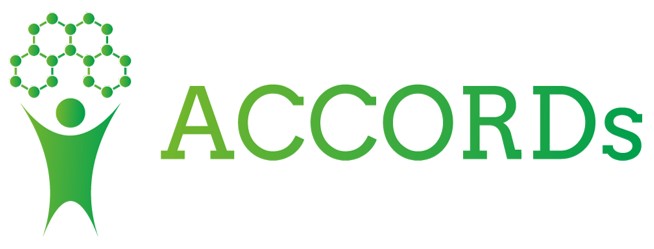
Two days focussed on next generation risk assessment, computational methods and the assessment of complex samples along the life cycle
Internationally harmonised and standardised test methods are a prerequisite for safety and sustainability assessments of chemicals and materials. Join the Horizon Europe projects iCare, MACRAMÉ, nanoPASS and ACCORDS, along with the Malta Initiative, at the 2nd Harmonisation of Test Methods Workshop to explore the latest advances in regulatory risk assessment and imaging techniques for the characterization and evaluation of advanced materials.
Intended Audience
*** NOTE: Session- and Presentation-Titles are wroking titles and may change. ***
(technical chair: Sean Kelly (NIA))

Dr Sean Kelly, Senior Project Manager & Interim Director General
Sean has led NIA's project activities since he joined in 2015. Prior to joining NIA, Sean worked for 10 years at the University of Leeds where he managed collaborative research between the university and industry. He has worked across diverse collaboration types within nano applications, including European Regional Development Funds (ERDF), a joint venture with the King Abdullah Institute for Nanotechnology, and at senior project management levels in collaborative Framework Programme projects from FP6 onwards.
10:00 – 10:10
10:10 – 10:30
Status of nano Test Guideline Developments
Mar Gonzalez (OECD)
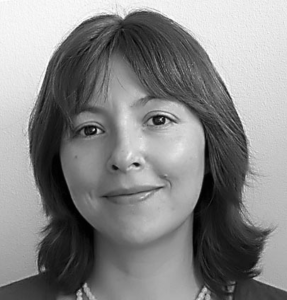
Mar Gonzalez is responsible for implementing the OECD’s nanosafety and advanced materials program. Her work focuses on enhancing regulatory preparedness and timely decision-making for nanomaterials and advanced materials. She coordinates the development of tools to assess the hazards of these materials, implements the Safer and Sustainable Innovation approach, and advances knowledge of emerging materials to improve anticipatory risk governance. This aligns with strategies for managing industrial chemicals.
10:30 – 10:50
Erik Bleeker (RIVM)

Dr. Eric Bleeker is a senior scientist at the National Institute of Public Health and the Environment (RIVM) in the Netherlands. He has a PhD in ecotoxicology and previously worked as a post-doc researcher in ecotoxicology for about 8 years. For the last 15 years he has been working on risk assessment of chemicals with a focus on nanomaterials, mainly focused on the European chemicals legislation REACH. His work on nanomaterials involves a broad range of topics. He provides policy advice and support, both on a national level (to several Dutch ministries), as well as on international levels (e.g. in adaptations of the REACH Regulation, the EU Recommendation on the definition of nanomaterials, and representing the Netherlands in ECHA’s NanoMaterials Expert Group and in the OECD Working Party on Manufactured Nanomaterials). He also contributes to guidance and test guidelines for nanomaterials (e.g. REACH Guidance at ECHA, OECD Test Guidelines and Guidance Documents). Furthermore, he has been and still is participating in several EU research projects that support risk assessment of nanomaterials (e.g. GRACIOUS, Gov4Nano, and NanoHarmony), which included advancing grouping approaches, test guideline developments, and governance. Currently, he expands his activities towards more advanced materials (e.g. in OECD-WPMN and the EU project MACRAMÉ).
Next generation risk assessment – Challenges of its applicability for AdMas
Chair:
Ernesto Alfaro-Moreno (INL)

The main interest of Ernesto Alfaro-Moreno lies in evaluating local and systemic effects induced by PM10, PM2.5, and nanoparticles. He has been focused on characterizing the toxicity of particles while evaluating the effects on epithelial, endothelial, and monocytic cells. He has been very active in the characterization of Cytotoxic, genotoxic, and proinflammatory effects. He also has been involved in the development and improvement of new In vitro models. His current interest in the Nanosafety area include the development of alveolo-vascular communication models, models for skin-on-a-chip, multi-sensing, C. elegans, and in silico assessments of nanoparticles and complex mixtures.
10:50 – 11:10
Elisabet Berggren (JRC)
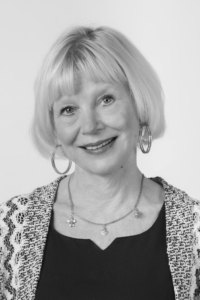
Elisabet Berggren is Deputy Head of Unit of the Systems Toxicology Unit, at the Joint Research Centre (JRC), European Commission. Currently she is contributing to the setting up of the Commission roadmap towards phasing out of animal testing in chemicals safety assessment, as a response to the European Citizens’ initiative "Save Cruelty Free Cosmetics - Commit to a Europe without animal testing". In this context also the initiative the EPAA Designathon based on a future vision of chemicals safety assessment - Chemicals 2.0, is very relevant. Elisabet is contributing to the United Nations Globally Harmonised System for Classification and Labelling of Chemicals. She started to work for the European Commission in 1996 at the European Chemicals Bureau. When its responsibilities were handed over to ECHA, she changed to her current unit, which is also hosting the European Union Reference Laboratory for Alternatives to Animal Testing (ECVAM) as established under the Directive 2010/63/EU on the protection of animals used for scientific purposes.
11:10 – 11:25
Matthias Herzler (BfR)
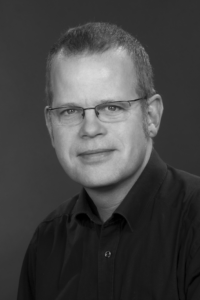
Matthias Herzler is a scientific director and unit head at the German Federal Institute for Risk Assessment (BfR). He has more than 20 years of experience as a risk assessor under various European chemicals legislations (pesticides, biocides, REACH and CLP).
Dr. Herzler’s scientific interests circle around the uptake of New Approach Methodologies (NAMs) into regulatory practice. Over the past 20 years, he has been member of numerous EU, OECD, WHO and UN expert groups in the field, in addition to providing regulatory advice to the EU Horizon 2020 projects EU-ToxRisk and RISK-HUNT3R.
At present, Dr. Herzler and his unit are deeply engaged in transversal activities under the European PARC Partnership. They are also part of the consortium of the Horizon2020 project PANORAMIX.
11:25 – 11:40
Activities in PARC on Nanomaterials
Iseult Lynch (UoB)
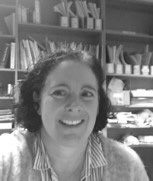
Iseult Lynch is an Irish chemist and Professor of Enivornmental Nanoscience at the School of Geography, Earth and Environmental Sciences at the University of Birmingham. Her research focuses on the safety of nanoparticles in the environment and their interactions with biological entities.
11:40 – 12:00
Challenges and steps of validating NAMs (Updating OECD Guidance Document 34)
Joao Barroso (JRC)
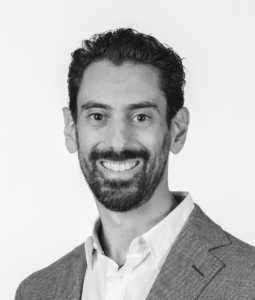
João Barroso is a senior scientific officer at the European Commission’s Joint Research Centre (JRC). Dr Barroso holds a PhD in Biochemistry since 2005. In 2008, he joined the European Union Reference Laboratory for Alternatives to Animal Testing (EURL ECVAM), where he coordinates and conducts scientific and policy support activities in the area of non-animal methods, including the identification and assessment of promising methodologies for regulatory and biomedical applications and their translation into EU legislation and international standards (e.g., OECD Test Guidelines, UN GHS). Dr Barroso also coordinates the ESAC, a scientific advisory committee responsible for conducting independent scientific reviews on non-animal methods and approaches on request of EURL ECVAM, as well as the issuing of EURL ECVAM Recommendations on the basis of ESAC Opinions. He is currently leading the revision of OECD Guidance Document 34 on the validation and international acceptance of test methods for hazard assessment on behalf of the EU. In 2009 and 2016, João was presented with a JRC Award for Excellence in the category Policy Impact in recognition of significant scientific achievement.
12:00 – 12:40
12:40 – 13:00
Robert Landsiedel (BASF)

Robert Landsiedel is Vice President of special toxicology at BASF SE in Ludwigshafen am Rhein, Germany. He previously worked for BASF in development, regulatory and management roles in the USA and in Japan. He is an associate professor (Privatdozent) at the Free University of Berlin and the current president of the German Society of experimental and clinical Pharmacology and Toxicology (DGPT). His team at BASF is performing more than 500 regulatory toxicological studies per year under GLP, GIVIMP and ISO17020 as well as screenings for product development. In addition, they are developing and validating new toxicological methods and testing strategies.
13:00 – 13:20
The Bridging Model C. elegans as a NAMs Tool in Neuronanosafety: Updates from iCare
Nivedita Chatterjee (INL)
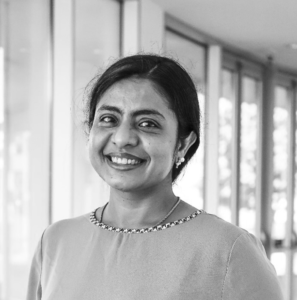
Nivedita Chatterjee is a staff researcher in the nanosafety group at INL, Braga, Portugal. Her research focuses on the underlying mechanisms and molecular toxicology of nanomaterials, particularly genotoxicity, epigenetic alterations, and neurotoxicity. In the European Horizon project iCare, she is leading Work Package 3, using C. elegans as a model for neuro-nanosafety.
13:20 – 13:40
Andrea Haase (BfR)
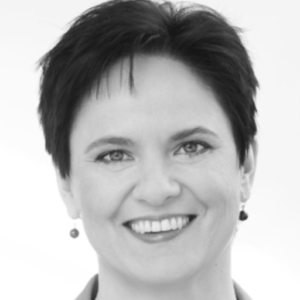
Andrea Haase is affiliated to Federal Institute for Risk Assessment . He is a recipient of many awards and grants for his valuable contributions and discoveries in major area of subject research. His international experience includes various programs, contributions and participation in different countries for diverse fields of study. His research interests reflect in his wide range of publications in various national and international journals.
13:40 – 14:50
Round Table Discussion: Next generation risk assessment and the specific challenges for AdMas
Moderator:
Tommaso Serchi (LIST)
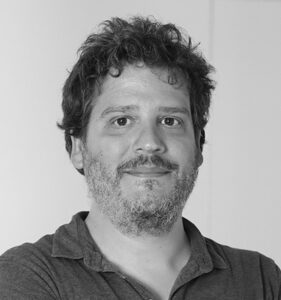
Dr. Tommaso Serchi is a Principal R&T Associated within the Environmental Health group of the Luxembourg Institute of Science and Technology. He has a background in medicinal chemistry and technology. He obtained a PhD in medical biotechnology and he is an European Registered Toxicologist (Belgian Registry) and holds a habilitation from the Italian Ministry of Education and from the University of Luxembourg. He is a toxicologist with more than 10 years of experience in proteomics and in developing complex 3D in vitro models for a multitude of applications. He coordinates and is partners of several EU projectsn and EFSA projects.
He is the Head of the Luxembourg delegation for the OECD Working Party on Manufactured Nanomaterials (WPMN) and deputy Head of the Luxembourg delegation for the OECD National co-ordinators of the Test Guidelines programme working group. He participates in OECD working groups and experts committees such as those for “Bioacumulation of NanoMaterials” or for “Intestinal fate of orally ingested Nanomaterials”. He is the co-chair of the OECD Steering Group on Testing and Assessment (SGTA).
His scientific interests range from toxicology, cell biology and cellular/tissue engineering, regulatory toxicology and, especially, to the development of advanced New Approach Methodologies (NAMs) for bio-medical and toxicological applications. He is the coordinator of the H2020 project PHOENIX (Pharmaceutical Open Innovation Test Bed for Enabling Nono-pharmaceuticals Innovative Products) and of the Horizon Europe project CHIASMA (Accessible Innovative Methods for the Safety & Sustainability Assessment of Chemicals & Materials).
He is co-author of 59 scientific publications and 5 patents, and Google scholar has registered >2200 citations and an h-index of 26.
14:50 – 15:00
Closing remarks of Day 1
Ernesto Alfaro-Moreno (INL)

The main interest of Ernesto Alfaro-Moreno lies in evaluating local and systemic effects induced by PM10, PM2.5, and nanoparticles. He has been focused on characterizing the toxicity of particles while evaluating the effects on epithelial, endothelial, and monocytic cells. He has been very active in the characterization of Cytotoxic, genotoxic, and proinflammatory effects. He also has been involved in the development and improvement of new In vitro models. His current interest in the Nanosafety area include the development of alveolo-vascular communication models, models for skin-on-a-chip, multi-sensing, C. elegans, and in silico assessments of nanoparticles and complex mixtures.
(technical chair: Elisabeth Heunisch (BAuA))
 Dr. Elisabeth Heunisch is a scientist at the Federal Institute for Occupational Safety and Health (BAuA) in Germany with a background in Physical Chemistry. She has a PhD in Chemistry obtained at the Free University Berlin for her work at the Helmholtz-Zentrum Berlin on charge separation in quantum dot layers. Her work is dedicated towards the safety of nano- and advanced materials, with a strong focus on occupational safety towards fibrous aerosols. She is co-leading the EU-funded project NanoHarmony and co-chairing the Malta Initiative, both dedicated to support the development of OECD Test Guidelines for nanomaterials. She is involved in several further research projects that support risk assessment of nano- and advanced materials (Gov4Nano, MACRAMÉ) and contributes to the OECD Test Guideline for dustiness testing of nanomaterials and the WPMN Guidance on Release Tests for Nanomaterials.
Dr. Elisabeth Heunisch is a scientist at the Federal Institute for Occupational Safety and Health (BAuA) in Germany with a background in Physical Chemistry. She has a PhD in Chemistry obtained at the Free University Berlin for her work at the Helmholtz-Zentrum Berlin on charge separation in quantum dot layers. Her work is dedicated towards the safety of nano- and advanced materials, with a strong focus on occupational safety towards fibrous aerosols. She is co-leading the EU-funded project NanoHarmony and co-chairing the Malta Initiative, both dedicated to support the development of OECD Test Guidelines for nanomaterials. She is involved in several further research projects that support risk assessment of nano- and advanced materials (Gov4Nano, MACRAMÉ) and contributes to the OECD Test Guideline for dustiness testing of nanomaterials and the WPMN Guidance on Release Tests for Nanomaterials.
10:00 – 10:10
Standardising testing along the life-cycle of advanced material-enabled products for risk assessment
Chair:
Blanca Suarez Merino (TEMASOL)
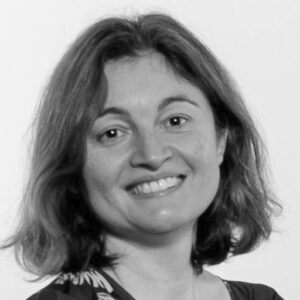
Dr Suarez-Merino (DPhil Oxford Biochemistry) is the Regulatory Affairs Director at the Nanotechnology Industries Association and Cofounder of TEMAS Solutions GmbH. Dr Suarez-Merino is Vice Chair of the BIAC Nanotechnology Committee at the OECD contributing to several groups under the OECD WPMN including the Steering Group on Advanced Materials and the Safe Innovation Approach. She also contributes to the Nanomaterial Expert Group under ECHA and the EFSA's Stakeholder Discussion Group on Emerging Risks (StadDG-ER). She is also a National Expert under the Nanotechnologies Standardisation Group (SNV) and routinely contributes to work under CEN/TC 352 Nanotechnologies, leading the SSbD standard. Dr Suarez-Merino is also a member of the Swiss National Platform on the safe handling of synthetic nanomaterials and co-authored the update of the Precautionary Matrix for Nanomaterials, and contributed to different testing guidelines for safety assessment of nanomaterials, the latest one being the adaptation of OECD TG 442D. She has been very active in European Projects focusing on Regulatory research and nanomaterials for several years.
10:10 – 10:30
Guidance on release testing of nanomaterials
Anna Pohl (BAuA)

Dr. Anna Pohl is a scientist working at the Federal Institute for Occupational Safety and Health (BAuA) in Germany with a background in Micro- and Nanotechnology. She has a PhD in Biophysics obtained at the Max Planck Institute of Colloids and Interfaces and worked as post-doc at the University of California (Riverside). Her scientific work is dedicated towards the safety of nano- and advanced materials, with a strong focus on investigating the interaction of nanostructures and advanced materials with biological organisms as well as developing new, biocompatible and bioinspired materials and safety test methods. She developed the scientific basis for a new OECD Test Guideline for dustiness testing of nanomaterials. She was and is involved in several EU-funded research projects that support risk assessment of nanomaterials (Gov4Nano, NanoHarmony, MACRAMÉ) and contributed to the development of training materials for Test Guideline developers. Furthermore, she is coordinating an international project towards a new OECD Working Party on Manufactured Nanomaterials (WPMN) Guidance on Release Tests for Nanomaterials.
10:30 – 10:50
Stephen Hodge (Versarien)

Dr Stephen Hodge is Chief Technology Officer at Versarien plc, an advanced engineering materials group. The company creates innovative engineering solutions for its clients in a diverse range of industries. Stephen leads the advanced materials businesses, which are predominantly focused on the manufacturing and commercialisation of graphene across multiple sectors. Their current focus is designing and developing products and solutions for the construction and textiles sectors that reduce carbon emissions and support sustainable circular economy.
With the scaling up of novel nanomaterials comes standardisation and significant regulation challenges. Stephen has a key role in ensuring that their graphene materials are registered appropriately and ensure that they, and other graphene manufacturers, are responsible in doing everything they can to ensure the safe manufacture, incorporation and use of these novel materials. He does this through his involvement with various working groups looking at nanomaterials characterisation and human and environmental toxicological testing.
10:50 – 11:10
Kai B. Paul (Blue Frog Scientific Group)
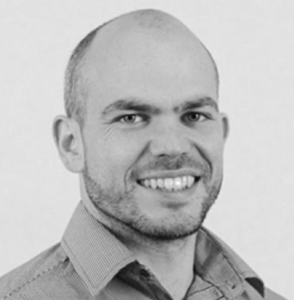
Kai is a regulatory expert, in particular for nanoforms under the REACH regulation. Kai has >15 years experience working with nanomaterials, in an academic and regulatory capacity. He has researched areas in ecotoxicology and in vitro mammalian cell models as well as characterisation. He is the Blue Frog Team Lead for the Animal-Free Regulatory Solutions & Nanomaterial team. He is the current Chair of the SETAC Nanotechnology Interest Group and Vice-Chair of the Nanotechnology Regulatory Committee.
11:10 – 11:40
Q&A Session & Discussion
Moderator:
Blanca Suarez Merino (TEMASOL)

Dr Suarez-Merino (DPhil Oxford Biochemistry) is the Regulatory Affairs Director at the Nanotechnology Industries Association and Cofounder of TEMAS Solutions GmbH. Dr Suarez-Merino is Vice Chair of the BIAC Nanotechnology Committee at the OECD contributing to several groups under the OECD WPMN including the Steering Group on Advanced Materials and the Safe Innovation Approach. She also contributes to the Nanomaterial Expert Group under ECHA and the EFSA's Stakeholder Discussion Group on Emerging Risks (StadDG-ER). She is also a National Expert under the Nanotechnologies Standardisation Group (SNV) and routinely contributes to work under CEN/TC 352 Nanotechnologies, leading the SSbD standard. Dr Suarez-Merino is also a member of the Swiss National Platform on the safe handling of synthetic nanomaterials and co-authored the update of the Precautionary Matrix for Nanomaterials, and contributed to different testing guidelines for safety assessment of nanomaterials, the latest one being the adaptation of OECD TG 442D. She has been very active in European Projects focusing on Regulatory research and nanomaterials for several years.
Essential use of advanced computational methods to support risk assessment of nano and advanced materials
Chair:
Damjana Drobne (University of Ljubljana)
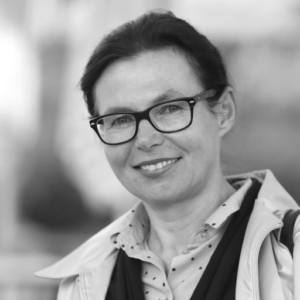
Prof. Dr. Damjana Drobne is head of Bionanoteam, the Research group for nanobiology and nanotoxicology at the Biotechnical faculty, University of Ljubljana.
11:40 – 12:00
Read across and grouping
Agnieszka Gajewicz-Skretna (Uni Gdansk)

Agnieszka Gajewicz-Skretna, PhD, works as Assistant Professor at the University of Gdansk, Poland. Her current research interests lie in the development and application of machine learning, statistical learning theory, and chemometrics to address problems and challenges in computer-based methods for chemical safety assessment and designing new chemicals (e.g. nanomaterials, ionic liquids) that are safe for human health and the environment. Dr. Gajewicz-Skretna is the author of over 50 research publications, including those in leading journals (e.g., Nature Nanotechnology, Nanotoxicology, Nanoscale, Chemistry of Materials, Environmental Science Nano). She is also a recipient of prestigious international and national awards, including: L'Oréal-UNESCO International Rising Talents Award For Women in Science; Polish Intelligent Development Award 2019 in the category "Scientist of the Future", and laureate of the individual fellowship of the Polish Minister of Science and Higher Education for outstanding young researchers. Dr. Gajewicz-Skretna serves in different capacities in the Editorial Boards of several International Journals.
12:00 – 12:20
Advanced computational methods for automated correlative microscopy of AdMas
Asmus Meyer-Plath (BAuA)
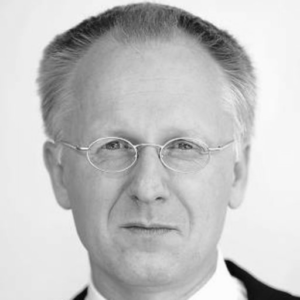
12:20 – 13:00
13:00 – 13:20
Dan Hodoroaba (BAM)

Vasile-Dan Hodoroaba is head of the Division Surface Analysis and Interfacial Chemistry at BAM (www.bam.de/Navigation/EN/About-us/Organisation/President/Department-6/Division-61/division61.html) and a representative of the nano@BAM Competence Center (www.bam.de/Navigation/EN/Topics/Materials/Nano/safe-nanomaterials.html). His current research activities focus on correlative approaches for accurate physico-chemical characterization of nanomaterials, mainly by means of electron and X-ray spectroscopies/microscopies with increased consideration of graphene-related 2D materials. Dan is a representative of Germany at VAMAS, chairing TWA 37 Quantitative Microstructural Analysis and leading several nano projects; he is an WG convenor in ISO/TC 202 Microbeam Analysis and head of the DIN standardization mirror committee and acts as an expert in ISO/TC 229 Nanotechnologies and CEN/TC 352 Nanotechnologies. He is author of about 150 WoS articles, editor of the book Characterization of Nanoparticles and active in several European projects on nanomaterials.
13:20 – 13:40
Automated time-evolved microscopy, automated image quantification and automated in-vitro-to-in-silico translation for High-throughput Mode-of-Action determination and associated long-term Hazard assessment
Janez Štrancar (Infinite Biotech)
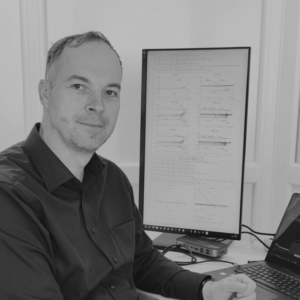
Dr. Janez Štrancar has been unraveling the evolution of the biological responses on subcellular level after being exposed to various materials and chemicals already for more than 20 years. As a molecular biophysicist he is driving the development of application of advanced and superresolution microscopies coupled to sophisticated in silico models to address the puzzle of early subcellular events’ evolution, leading to discovery of several initiating events (from membrane wrapping that leads to potential relocation of membrane components as well as quarantining that serves as a temporary defense mechanism of epithelial cells).
From 2006, he heads the Laboratory of biophysics at Condensed matter department at Jozef Stefan Institute in Ljubljana (Slovenia), from which he also spun out the company Infinite (in 2019), where he push the limits by automating the Mode-of-Action discovery and its application to automated long-term health hazard assessment, which addresses the potential disease developments months or even years after the first exposure and can already be delivered in less than a week.
13:40 – 14:00
Roland Grafström (KI)
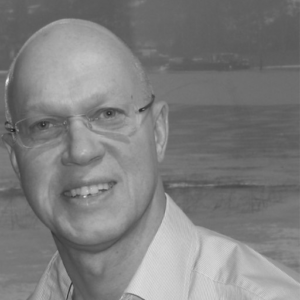
Prof. Grafström received his Medical Science degree in 1980 and has been maintaining a tenured Professor position at the Karolinska Institute (KI) in Stockholm, Sweden, since 2000.
His CV lists about 150 peer-reviewed research articles and several international awards related to environmental medicine, toxicology and alternative methods research. His area of expertise includes application of human cells to toxicity analyses, cancer research and omics-based biomarker discovery. His major academic funding comes from the Swedish Research Council, the Swedish Allergy and Cancer fund and five EU-FP-7 and H2020 programms emanating projects devoted to chemicals and nanomaterials safety assessment.
Roland Grafström is founder, board member and part-owner of Cercon AB, a company devoted to biomedical consulting (1983-current), and Predictomics AB, a company devoted to biomarker assisted prediction and testing of human health (2008-current). The company missions have been directed towards both academic and industrial institutions including theoretical and practical courses as well as research guidance. Clients have included Pfizer, ASTRAZENECA, Nestlé, Unilever, Akzo Nobel, Swedish Match, Casco AB, Perstorp AB and various biotech companies as well as academic research institutions throughout Europe. His contact and record of engagement for BioTeSys has included various projects since 2002.
14:00 – 14:20
Thomas Exner (7P9)
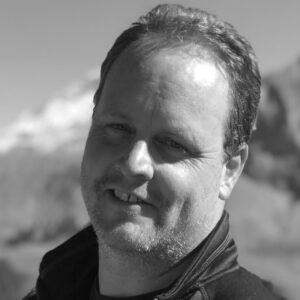
Dr. Thomas Exner (M) is a founding partner and Chief Scientific Officer of the Slovenian-based SME Seven Past Nine d.o.o. Dr. Exner studied chemistry and did his PhD at the Technische Universität Darmstadt (Germany) followed by a postdoc at the University of Saskatchewan, Canada. After 12 years of independent academic research (University of Konstanz and University of Tübingen), he joined Edelweiss Connect in 2015 and finally moved on to Seven Past Nine in 2021. There, he is responsible for the scientific planning, execution, supervision and coordination of different projects in the area of safety and sustainability of advanced materials and the use of digital approaches therein.
14:20 – 14:50
Q&A Session & Discussion
Moderator:
Damjana Drobne (University of Ljubljana)

Prof. Dr. Damjana Drobne is head of Bionanoteam, the Research group for nanobiology and nanotoxicology at the Biotechnical faculty, University of Ljubljana.
14:50 – 15:00
Closing of Day 2 and the 2nd Joint Workshop
Blanca Suarez Merino (TEMASOL)

Dr Suarez-Merino (DPhil Oxford Biochemistry) is the Regulatory Affairs Director at the Nanotechnology Industries Association and Cofounder of TEMAS Solutions GmbH. Dr Suarez-Merino is Vice Chair of the BIAC Nanotechnology Committee at the OECD contributing to several groups under the OECD WPMN including the Steering Group on Advanced Materials and the Safe Innovation Approach. She also contributes to the Nanomaterial Expert Group under ECHA and the EFSA's Stakeholder Discussion Group on Emerging Risks (StadDG-ER). She is also a National Expert under the Nanotechnologies Standardisation Group (SNV) and routinely contributes to work under CEN/TC 352 Nanotechnologies, leading the SSbD standard. Dr Suarez-Merino is also a member of the Swiss National Platform on the safe handling of synthetic nanomaterials and co-authored the update of the Precautionary Matrix for Nanomaterials, and contributed to different testing guidelines for safety assessment of nanomaterials, the latest one being the adaptation of OECD TG 442D. She has been very active in European Projects focusing on Regulatory research and nanomaterials for several years.